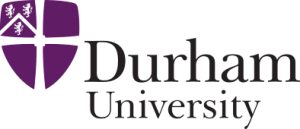The Project
The foreseen exponential growth of mobile data traffic will not be uniform across geographical areas, but is mainly concentrated in hot spots that are usually located in the built environments (BEs) such as central business districts, stations, airports, stadiums, dense urban environments, etc. This poses considerable challenges that we believe can be solved by ultra dense deployment of millimetre-wave (mmW) small-cells (SCs) in conjunction with massive multiple-input multipleoutput (MIMO) in 5G and beyond 5G (B5G) wireless networks. However, there are a number of research challenges that need to be addressed for a successful deployment of 5G/B5G wireless networks: even if the theoretical background of massive MIMO is by now rather complete, the actual performance characterization and measurements of mmW antenna arrays has not yet been fully addressed at either the component or system level; mmW radio channel measurements have been performed but with limited time delay resolution, single antennas and over single radio links; and mmW bands have been considered for mobile communications, but the level of detail and diversity of BEs necessary for meaningful mmW SC deployment has not been fully exploited. Therefore, we propose here a research approach that combines the three disruptive key enabling technologies for 5G/B5G with the aim to answer fundamental questions that are still not well understood.
Objectives
Develop and test mmW MIMO and massive MIMO antennas.
Characterize and model radio propagation channel at mmW bands for typical BEs (offices, homes, stations, airports).
Characterize and model the effect of human body on MIMO radio propagation at mmW bands.
Theoretically analyze and optimize massive MIMO mmW SC performance in the BEs.
Jointly optimize the planning/deployment of massive MIMO mmW SC networks and their operating environments.
Develop methods to retrofit existing buildings and to design new buildings for efficient high-capacity wireless
communications in the BEs.
Expected Impact
WAVECOMBE provides 396 person-months of high quality interdisciplinary and cross-sector research training for a new generation of scientists, who will benefit directly from the entrepreneurial and creative environment created by the network, and deliver impact at a European level. It will produce a critical mass of highly-skilled professionals, who are advantaged by their international and inter-sector mobility. It will:
Develop EU capacity and skills to advance mmW antenna design, channel modelling, understanding of fundamental limits of dense small cells, HetNet planning/optimisation tool development, IoT, VR and other high data rate applications in BEs.
Integrate mmW antennas and systems more closely with BEs to facilitate smart building applications.
Create strong interactions between wireless communications and building/BE/urban design and planning.
Increase EU competitiveness in 5G/B5G, smart environment/building/city.
Develop lasting academic and industry collaboration which ensures interdisciplinary and cross-sector research training programmes.
Create new and exciting career prospects for the fellows.
Consortium & Structure

The University of Sheffield (USFD)
Lead of WP3: Joint optimization of mmW SCs and the BEs
Lead of WP5: Project management
Key Persons: Prof Jie Zhang and Prof Martin Mayfield
Partner Organizations
Project Supervisory Board
Methodology & Implementation
WP1: Design and testing of mmW antennas for massive MIMO in the BE.
Objectives
- To design mmW massive MIMO antennas for compact SC base stations (or access points) based on the gap wave technology;
- To develop and implement OTA characterization methods and metrics for massive MIMO antennas;
- To develop guidelines on the deployment and OTA characterization of mmW massive MIMO antennas.
Description of Work and Role of Partners
Task 1.1: Simulations, design and fabrication of massive MIMO antennas and packaging for mmW (UT., USFD, Gapwaves, RPN)
Both the RF electronics and the digital circuits shall be placed on separate layers under the radiating antenna elements, which is separated by a metal plate or the ground plane of the substrates. The signal propagation from bottom electronics layer to top antenna layer can be achieved by using coupling slots. The work items are:
- To produce EM models of the antenna element for the massive MIMO antenna array. The focus will be on the suppression of the interference between all high frequency and digital components. The radiation patterns of the antennas will be used as an input to WP3.
- To analyse the scalability options to different mmW frequency bands with focus on the 60 GHz band.
- To produce a massive MIMO antenna prototype based on robust RF packaging solution, the RF noise currents through the power/ground plane and the parallel plate noise on the high speed digital circuits, based on the GAP technology.
- To characterize the OTA performance of massive MIMO antenna system based on methods in Task 1.2. The output will also be used for comparing various algorithms and their impact on the network performance (WP3) and real-life propagation environments (WP2).
Task 1.2: Num. and experimental verification of OTA performance of massive MIMO antennas (UT., Gapwaves, USFD, LTV, RPN)
The massive MIMO antenna system developed in Task 1.1 will be fully characterized in terms of OTA performance in the two edge propagation channels, i.e., RIMP and RLOS environments. The work items are:
- To develop an OTA massive MIMO characterization tool providing:
- all-in-one antenna performance characterization with focus on 5G BE scenarios;
- novel OTA characterization of massive MIMO antennas in terms of 3D spatial coverage of bit-streams in two orthogonal polarizations;
- exhaustive characterization of the impact of user distribution on system performance in RLOS and RIMP, and
- ability to assess and illustrate in-depth massive MIMO antenna system performance statistics at both the network and the user level. The outcomes are directly related to antenna models (or prototypes) developed in Task 1.1, the propagation channel model provided in Task 2.4 and the wireless network simulation environment in Task 3.3.
- To aid the massive MIMO antenna design in Task 1.1 by OTA performance evaluation based on the digital receiver threshold model with focus on multiplexing efficiency, beamforming and diversity gains for dual polarized antenna systems.
- To compare simulated performance in the real environment and numerical simulations with the RPN tool performed according to WP2 and WP3, respectively. The numerical models of the antennas will be used as an input to the RPN tool in WP3 to evaluate network capacity, throughput, outage probability, handover success rate, etc.
WP2: Characterization and modelling of radio propagation channels at mmW bands.
Objectives
- To perform measurements and extract channel parameters of suitable channel models for mmW MIMO in typical BEs;
- To study possible interference between mmW radio links;
- To study the effect of precipitation on the propagation of mmWs including polarisation rotation;
- To develop Partition of Unity (PoU) based algorithms for scattering of mmW signals from rough surfaces and other scatters;
- To study on-body and on-body to off body mmW radio channels and measure the effect of human shadowing in the BEs.
Description of Work and Role of Partners
Task 2.1: Upgrade the UDUR channel sounder (UDUR):
the UDUR high resolution channel sounder will be upgraded up to 110 GHz.
Task 2.2: Perform channel sounding measurements in the mmW bands in typical BE scenarios (UDUR, LTV, UPV, Gapwaves):
We will carry out measurements in indoor and outdoor scenarios such as building to building, lamp post to pedestrian, and indoor access points in conference halls and office buildings, considering the effects of human blocking, possible interference, rain, fog, and vegetation.
Task 2.3: Extract relevant channel parameters for future mmW systems (UDUR, UPV, RPN, LTV, Gapwaves):
The collected comprehensive data set collected will be analyzed to estimate various channel parameters such as time delay, number of clusters, intra-cluster parameters, the power angular spread in elevation and in azimuth and effects of precipitation on the polarization of the incoming wave, the coherence time, coherence bandwidth and interference between radio links mounted on building surfaces.
Task 2.4: Develop models that provide full propagation channel description and parameterization (UDUR, RPN, UPV, LTV):
We will develop PoU based algorithms for scattering of mmW signals from rough surfaces and other scatters, including human bodies, and compare the results with measurements in the anechoic chamber and in controlled environments, and integrate statistical models with deterministic ray based models developed by RPN.
Efforts and roles: WP2 is carried out jointly by the following partners, with UDUR being the WP leader.
WP3: Joint optimization of mmW SCs and the BEs
Objectives
- To obtain fundamental understanding of network capacity gains offered by dense deployment of mmW SCs in 3D BEs
- To jointly optimize massive MIMO configurations and RF properties of BEs for mmW SC deployment
- To jointly optimize the planning/deployment of massive MIMO mmW SCs and the wireless-friendly design (or retrofitting) of buildings
Description of Work and Role of Partners
Task 3.1: Derive fundamental performance limits of dense mmW SCs deployment in 3D BEs (USFD, RPN, UDUR, UT., UPV)
Task 3.1 aims to obtain fundamental understanding of network capacity gains from the dense deployment of mmW SCs in 3D BEs through:
- Modeling outdoor and indoor mmW interfering scenarios (between neighboring mmW SCs and from other mmW applications) and analyzing the effect of co-channel interference on the performance of dense mmW SCs both theoretically and quantitatively.
- Characterizing the interference-limited mmW SC network capacity as a function of radio resources and transmission power using convex analysis and Perron-Frobenius theory. The interrelationship between network capacity and density of mmW SCs in 3D will be characterized using the notation of demand scaling subject to cell load coupling. Simulation and numerical evaluation will be performed to verify the obtained interference and capacity models using the channel model developed in Task 2.4
Task 3.2: Optimization of mmW MIMO configurations for SCs in the BEs (USFD, UDUR, UT., LTV, RPN, UPV):
Task 3.2 complements Task 3.1 by investigating how mmW MIMO configurations should be optimized for SCs to mitigate co-channel interference and to provide very high capacity in outdoor and indoor BEs. The work items include:
- Optimizing MIMO configurations for mmW SCs based on the mmW MIMO antennas developed in Task 1.1, the mmW MIMO channel characterization of Task 2.3, and the interference modeling of Task 3.1; theoretically and quantitatively evaluating the capacity gains offered by the optimized mmW MIMO configurations in typical BEs using the channel model developed in Task 2.4.
- Optimizing mmW massive MIMO configurations for high-data-rate services such as video conferencing in offices and large conference rooms, using the mmW MIMO antennas developed in Task 1.1 and the mmW MIMO channel characterization of Task 2.3.
- Developing signal processing solutions for mmW massive MIMO, including beamtracking feasible mechanisms to boost the response time of scheduling. This activity will use the antennas developed in Task 1.1 and the channel characterization of Task 2.3.
Task 3.3: Joint optimization of mmW SC deployment and the BE (USFD, UPV, RPN, Telenor, UT., UDUR, Gapwaves, LTV):
Building on the results of Task 3.1 and Task 3.2, Task 3.3 investigates the joint optimization of mmW SC deployment and the BEs through:
- Developing a system-level mmW SC simulator based on iBuildNet, by integrating the geographic information system (GIS), 3D building models, and
traffic load maps. - Modelling mmW MIMO SC deployment in BE as an optimization problem and obtaining optimal network topology (locations of SCs) and SC configurations (MIMO configuration, tilt, azimuth, and power) for traffic densities from low to extremely high; comparing the network performance with the theoretical results in Tasks 3.1-3.2 and refining the theoretical models where necessary.
- Formulating the BE optimization problem as interference minimization; using the antenna, channel (e.g., AoA, PAS) and interference models from Tasks 1.2, 2.4 and 3.1 to identify the candidate areas where the layouts and material properties of building structures (e.g., wall, window, door and column) can be modified to minimize interference; quantifying the gains of BE optimization, comparing the results with theoretical analysis, and updating channel, interference and capacity models of Tasks 2.4, 3.1 and 3.2 if necessary.
- Jointly optimizing the deployment of massive MIMO mmW SCs and the design (retrofitting) of new (existing) BEs so that the sum cost of building and networking for high-rate services is minimized. The system-level simulator is used for performance assessment and optimization in practical BEs, where the analytical results in Tasks 3.1-3.2 serve as the benchmark.
WP4: Dissemination, exploitation, and public engagement
Objectives
- To identify instruments and strategies for effective result exploitation;
- to plan, monitor and follow‐up dissemination activities;
- to plan and arrange outreach efforts
Description of Work and Role of Partners
WP4 carries out the work and activities for result exploitation, dissemination, and public engagement. Result exploitation will be performed following the project plan for Intellectual Property Rights (please see further details in Section 3.2.3). Dissemination of R&D results will utilise a multitude of channels, ranging from academic journals, conferences, workshops, training school, to reports on open‐access sites, and online dissemination. Furthermore, WP4 conducts the important task of organizing outreach activities to increase the general public’s awareness of the research delivered by WAVECOMBE, its impact on society, and the benefit of Marie Skłodowska‐Curie Actions.
WP5: Project management
Objectives
- To identify instruments and strategies for effective result exploitation;
- to plan, monitor and follow‐up dissemination activities;
- to plan and arrange outreach efforts
Description of Work and Role of Partners
WP5 deals with the overall project management and coordination, in order to guarantee timely execution of the secondments of ESRs and R&D tasks. Financial management and risk management are also included in WP5. Moreover, WP5 defines the procedures and mechanisms to ensure that the project, the doctoral training and ESR secondments are carried out in line with the H2020 Marie Skłodowska‐Curie Actions.
The main instrument of WP5 is the Project Management Board (PMB), which consists of the Coordinator and partner Scientists-in-Charge, for management decision making throughout the project duration, following the rules and items set up in the project Consortium Agreement (CA) and Management Plan.







